Ready to embark on an unforgettable journey through the rugged wilderness? Searching for the perfect destination to satisfy your thirst for adventure and natural beauty? Look no further!
In this article, I’ll dive deep into the captivating landscapes of Montana and Wyoming, two states often revered for their breathtaking scenery and wild charms.
Montana and Wyoming boast some of the most coveted national parks in the United States, Yellowstone, and Glacier.
Montana, with its wide-open spaces and revered cowboy culture, provides a glimpse into the untamed West. Its bustling flora, towering mountain ranges, and charming ranch life make it a perfect retreat.
Wyoming captivates with its landmarks, including the iconic Grand Teton and the mythical legends of Jackson Hole. It tantalizes with its snowy winters, alpine forests, and dazzling sunrises.
So whether you crave the thrill of mountain goats scaling rocky peaks, join me on this exhilarating journey as we uncover the best that Montana and Wyoming have to offer.
Montana vs Wyoming: Why Are They Being Compared and Which Is Better?
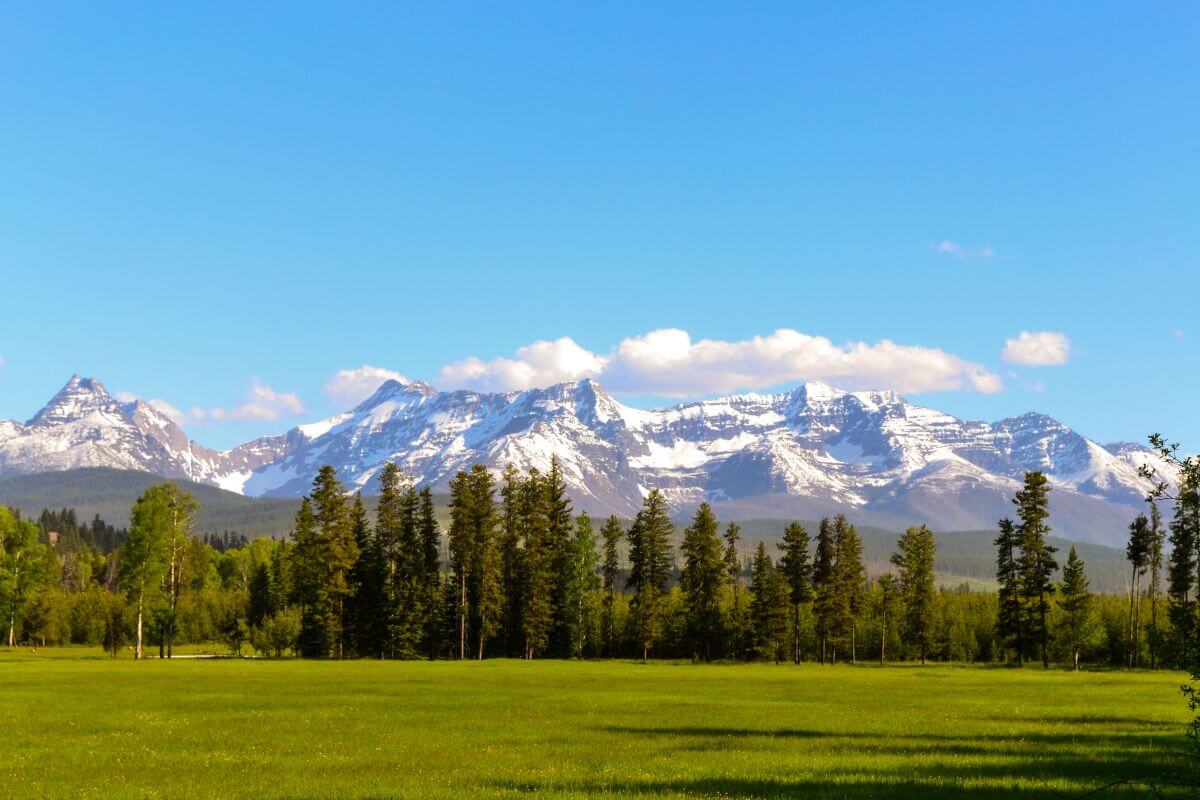
In this article, I’ll be comparing the captivating landscapes of Montana (MT) and Wyoming (WY), 2 states renowned for their stunning natural beauty and rich history.
Now, I’m here to guide you through comparing these awe-inspiring destinations and help you determine which will leave you with memories that last a lifetime.
Montana vs Wyoming: Size and Population
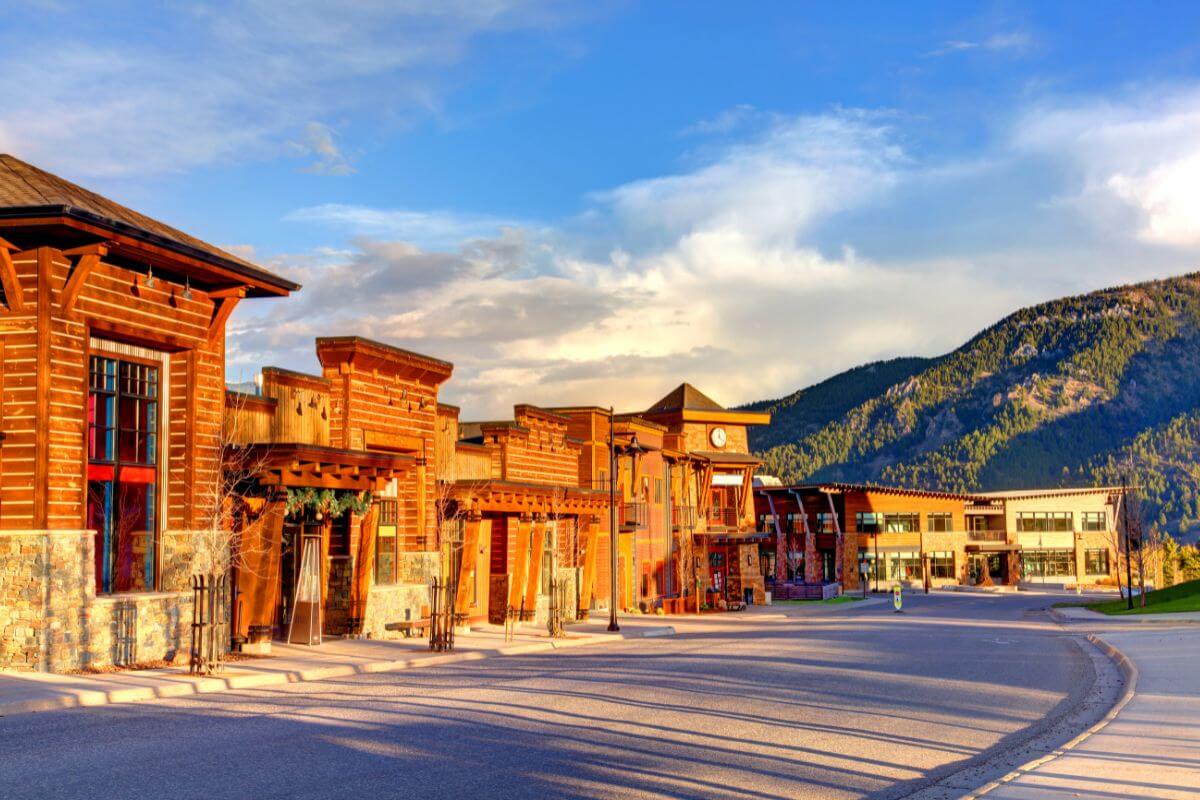
Regarding size, both states bring their own kind of bigness to the table. Montana stretches its arms wide, earning it the honorable title of the 4th-largest state in the nation.
Montana’s famous “Big Sky” scenery stretches as far as the eye can see, boasting beauty in every corner, where the spirit of ranch culture runs strong, and towns dot the landscape like precious gems.
Meanwhile, Wyoming may not boast the same acreage as its neighbor, but it’s no shrinking violet either. Wyoming holds its own as the 10th-largest state in the U.S.
Surrounded by snow-capped mountains, Wyoming’s rugged landscapes offer a snowy winter wonderland that’s nothing short of breathtaking.
As of July 1, 2022, Montana’s estimated population stands at 1,122,867 residents, making it a state with a charmingly low population density.
On the other hand, Wyoming is home to 581,381 souls, perpetuating its reputation as a state with wide-open spaces, where the average population per square mile leaves ample room for dreams to roam.
These figures provide insights into the geographical and population size of Montana and Wyoming:
| MT | WY | |
| Land area in square miles | 147,040 | 97,814 |
| Population estimates (as of 2022) | 1,122,867 | 581,381 |
Montana has Canada to the north, North Dakota and South Dakota to the east, Wyoming to the south, and Idaho to the west as its proud neighbors.
Wyoming, with its legendary equality, shares its borders with Montana on the north, South Dakota and Nebraska on the east, Colorado and Utah on the south, and Utah, Idaho, and Montana on the west.
Notable cities such as Billings and Missoula in Montana and Cheyenne and Jackson Hole in Wyoming offer glimpses into the heart of these majestic states.
Montana vs Wyoming: Lifestyle and Cost of Living

When it comes to lifestyle and cost of living, both states may seem similar on the surface, but there are distinct differences that set them apart. Let’s delve into the details.
1. Family, Age, and Sex – Montana has a slightly lower percentage of its population under 18 years old compared to Wyoming, while both states have a similar percentage of residents aged 65 and over.
The female population percentage in Montana is slightly higher than in Wyoming, and when examining the percentage of persons per household, both states show close values.
| MT | WY | |
| Population under 18 years old | 21.30% | 23.30% |
| Population aged 65 and over | 19.60% | 17.20% |
| Female population | 49.30% | 48.80% |
| Percent of persons per household | 2.41% | 2.44% |
2. Housing – Housing costs and rent are generally higher in Montana than in Wyoming.
| MT | WY | |
| Housing Units | 529,152 | 277,116 |
| Owner-Occupied Housing Unit Rate | 69.10% | 71.70% |
| Median Value of Owner-Occupied Units | $263,700 | $237,900 |
| Monthly Owner Costs (with a Mortgage) | $1,538 | $1,536 |
| Monthly owner costs (without a mortgage) | $476 | $451 |
| Median gross rent | $886 | $878 |
3. Education – Montana has a slightly higher percentage of individuals with a bachelor’s degree or higher compared to Wyoming, showcasing a slightly more educated population.
| MT | WY | |
| High school graduation rate (percent of persons age 25 years and older) | 94.40% | 93.70% |
| Population with Bachelor’s degree or higher | 33.70% | 28.50% |
4. Economy – Wyoming shows slightly higher figures in median household incomes compared to Montana indicating a slightly stronger economy.
| MT | WY | |
|---|---|---|
| Retail Sales per Capita | $16,070 | $15,732 |
| Median Household Income | $60,560 | $68,002 |
5. Healthcare – Both states demonstrate a need for improved healthcare coverage for individuals under the age of 65, but in Wyoming, the percentage of uninsured individuals is slightly higher.
| MT | WY | |
|---|---|---|
| Percentage without Health Insurance (under 65) | 10.1% | 14.8% |
6. Labor Force – Wyoming has a higher percentage of its population engaged in the civilian labor force compared to Montana.
| MT | WY | |
|---|---|---|
| Civilian Labor Force Participation (16+) | 62.9% | 65.1% |
7. Transportation – The mean travel time to work is slightly higher in Montana compared to Wyoming.
| MT | WY | |
|---|---|---|
| Mean Travel Time to Work (minutes) | 18.6 | 18.1 |
8. Income – Wyoming has a slightly higher median household income and per capita income than Montana, indicating relatively better income levels in the state.
| Income | MT | WY |
| Median household income | $60,560 | $68,002 |
| Per capita income | $34,423 | $36,288 |
9. Poverty – Both states have a significant portion of their populations living below the poverty line.
| MT | WY | |
|---|---|---|
| Median Household Income | $60,560 | $68,002 |
10. Computer and Internet Use – Both Montana and Wyoming have a strong presence of technology and internet, with almost similar percentages of households having computers and broadband internet subscriptions.
| MT | WY | |
|---|---|---|
| Households with a Computer | 91.8% | 93.9% |
| Households with Broadband Internet Subscription | 85.2% | 87.3% |
Montana vs Wyoming: Weather and Terrain
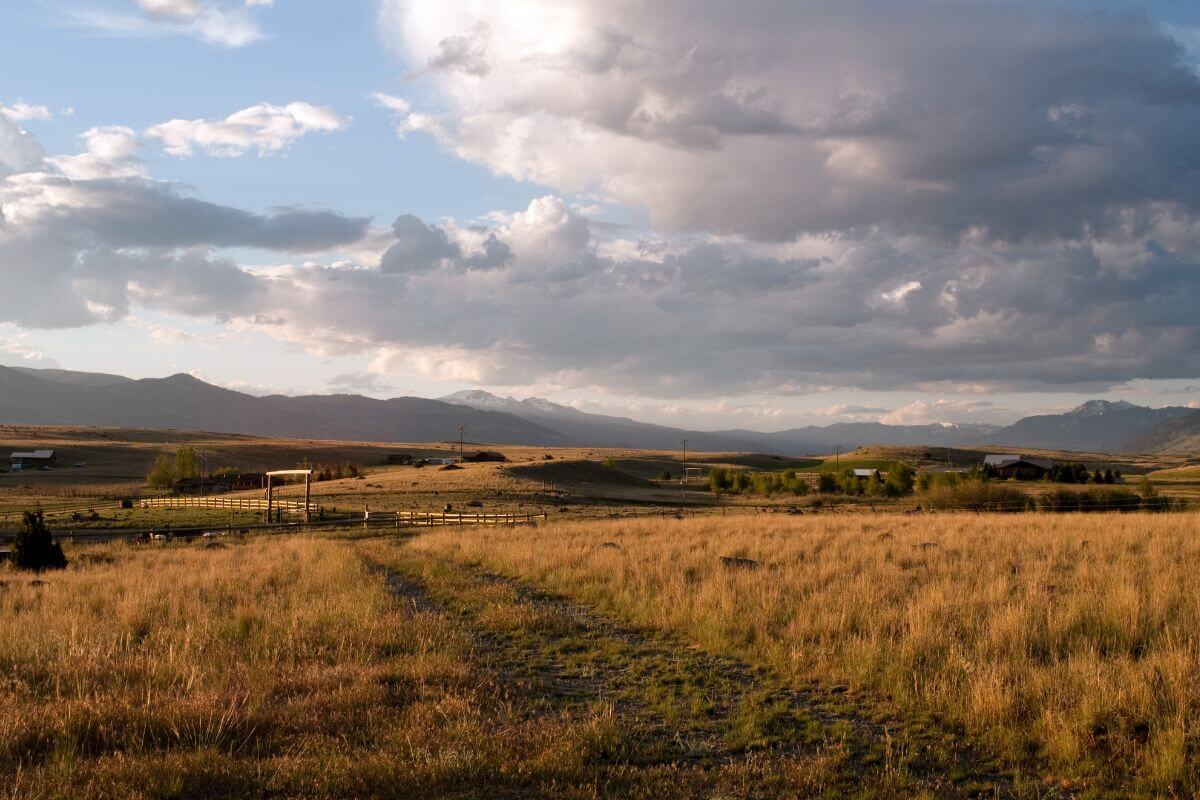
When it comes to Montana and Wyoming, the first thing that comes to mind is their breathtaking landscapes. These 2 states boast some of the most stunning natural beauty in the United States.
From towering mountain ranges to sprawling plains and deep valleys, the terrain in Montana and Wyoming is simply awe-inspiring.
Montana has diverse landscapes, featuring mountains, canyons, river valleys, forests, grassy plains, badlands, rolling hills, and majestic ranges, including the Rocky Mountains and the Bitterroot Range.
Wyoming has 6 physiographic areas:
- The Black Hills
- The Great Plains
- The Southern Rocky Mountains
- The Middle Rocky Mountains
- The Northern Rocky Mountains
- The Wyoming Basin
The Black Hills extend into South Dakota and exhibit relatively gentle topography. They differ in terms of their weather and terrain, but both states offer unrivaled natural beauty and diverse ecosystems.
Whether you’re seeking snowy winter adventures, exploring mountains and glacial lakes, or marveling at the fresh rain and swampy terrain, both states have something to offer for every nature lover.
The following provides a glimpse into the diverse seasons and landscapes of Montana and Wyoming:
1. Summer – Summers in Montana are generally dry and sunny, while Wyoming enjoys cooler summers due to its elevation.
- Summers in MT are delightful, with dry and sunny days, occasional clouds, and gentle rain showers. Temperatures range from 75-90°F, with the possibility of heat waves reaching the low 100s °F.
- Thunderstorms may occur, particularly in eastern MT, where dry thunderstorms pose a wildfire risk.
- The warmest parts of Wyoming are the lower portions of the Bighorn Basin, the central and northeast low elevations, and along the eastern border.
- In Wyoming, average maximum temperatures in July range between 85°F and 95°F, but they drop rapidly with increasing elevation. Summer nights are cool, and higher elevations can be even cooler.
2. Fall – When fall arrives, both Montana and Wyoming offer a mix of Indian summer days and colder weather. Cold waves and sporadic snow showers are common in both states during this time.
- Fall weather in MT begins in late September and extends into November. It can be quite variable, with weeks of Indian summer followed by cold rain and sporadic snow showers.
- In Wyoming, January is the coldest month, minimum temperatures range mostly from 5°F to 10°F, and they can go lower in western valleys.
- Wyoming has experienced rapid and frequent temperature changes between mild and cold spells in the fall.
3. Winter – Montana and Wyoming have diverse winters with varying temperatures, snowfall, and unique conditions due to blowing snow and Chinook winds.
- Eastern MT tends to be colder than the western part of the state, with areas east of the Continental Divide enduring below-zero temperatures.
- Western MT receives more snowfall compared to the east, with strong winds and blowing snow being common in the eastern region.
- Likewise, winter in Wyoming exhibits significant temperature variations across the state, with colder weather on the eastern side of the Continental Divide.
- Cold waves in Wyoming lack significant snowfall, especially in January when most areas experience minimum temperatures between 5°F and 10°F, dropping even lower in the western valleys.
- Blowing snow and Chinook winds also play a role, creating unique winter conditions in different parts of Wyoming.
4. Spring – Finally, the arrival of spring brings delight and unpredictability to both Montana and Wyoming.
- In MT, snowfall gradually lessens, and rain becomes prevalent in May and June. The western part warms up slowly, while the eastern part warms up faster, occasionally experiencing scorching weather.
- In Wyoming, short growing seasons due to early and late freezes are common, making it challenging for some plants to thrive.
Montana vs Wyoming: Natural Resources and Wildlife
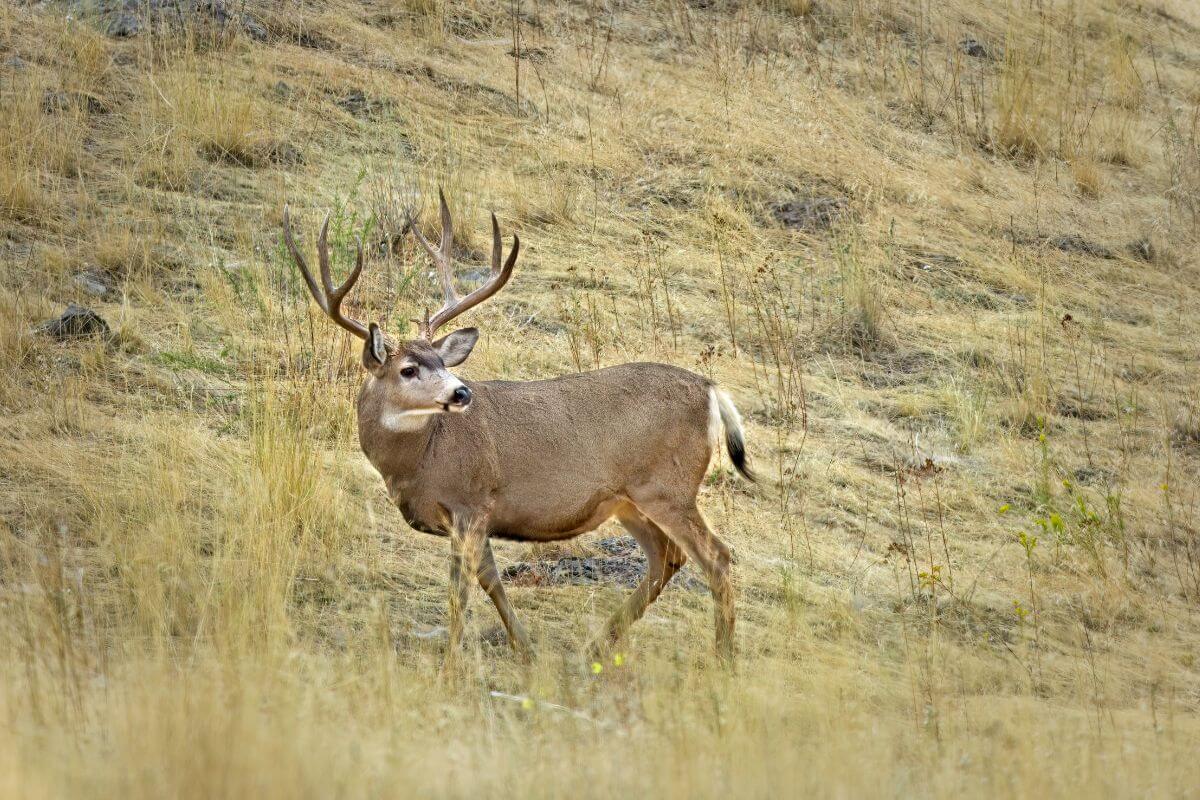
Both Montana and Wyoming are blessed with stunning landscapes, thriving ecosystems, and abundant natural resources, making them essential components of the United States’ natural heritage.
Whether you’re exploring glacial tides in Montana or witnessing dazzling sunrises in Wyoming’s alpine forests, these states offer a treasure trove of experiences.
Montana, The Treasure State’s Resources and Wildlife:
1. National Parks – Montana boasts 2 iconic national parks, Glacier National Park and Yellowstone National Park.
Glacier National Park’s natural beauty is one reason why Montana is known around the world; another reason is Yellowstone National Park’s amazing geysers, hot springs, and unique wildlife.
2. Wildlife Diversity – Montana is a haven for wildlife enthusiasts. The state is home to a diverse range of animals, including grizzly bears, beavers, deer, raccoons, and many more.
The landscapes of Montana provide habitats for a variety of creatures, making it a biodiversity hotspot.
3. Abundant Natural Resources – The natural resources in Montana are as rich as its landscapes. It is the sole producer of palladium and platinum in the United States and leads in talc production.
The state also plays a significant role in copper/molybdenum, garnet, and silver production, in addition to bentonite, gold, gemstones, and other resources.
Wyoming, The Equality State’s Resources and Wildlife:
1. National Parks – Wyoming boasts 2 iconic national parks, Yellowstone National Park, renowned for its geothermal wonders, and Grand Teton National Park, celebrated for its peaks and pristine lakes.
2. Wildlife Abundance – Wyoming is a wildlife enthusiast’s paradise. The state is known for its diverse wildlife population, including grizzly bears, mountain lions, bison, elk, wolves, pronghorn, and moose.
It’s a place where you can witness animal migrations, wild herds, and the majesty of nature.
3. Rich Natural Resources – Wyoming is a resource-rich state. From bentonite and crude gypsum to helium and soda ash, Wyoming contributes to the nation’s resource supply.
The state’s quarries yield dimension stone, and its mines extract minerals like limestone and volcanic cinder.
Montana vs Wyoming: Ski Resorts
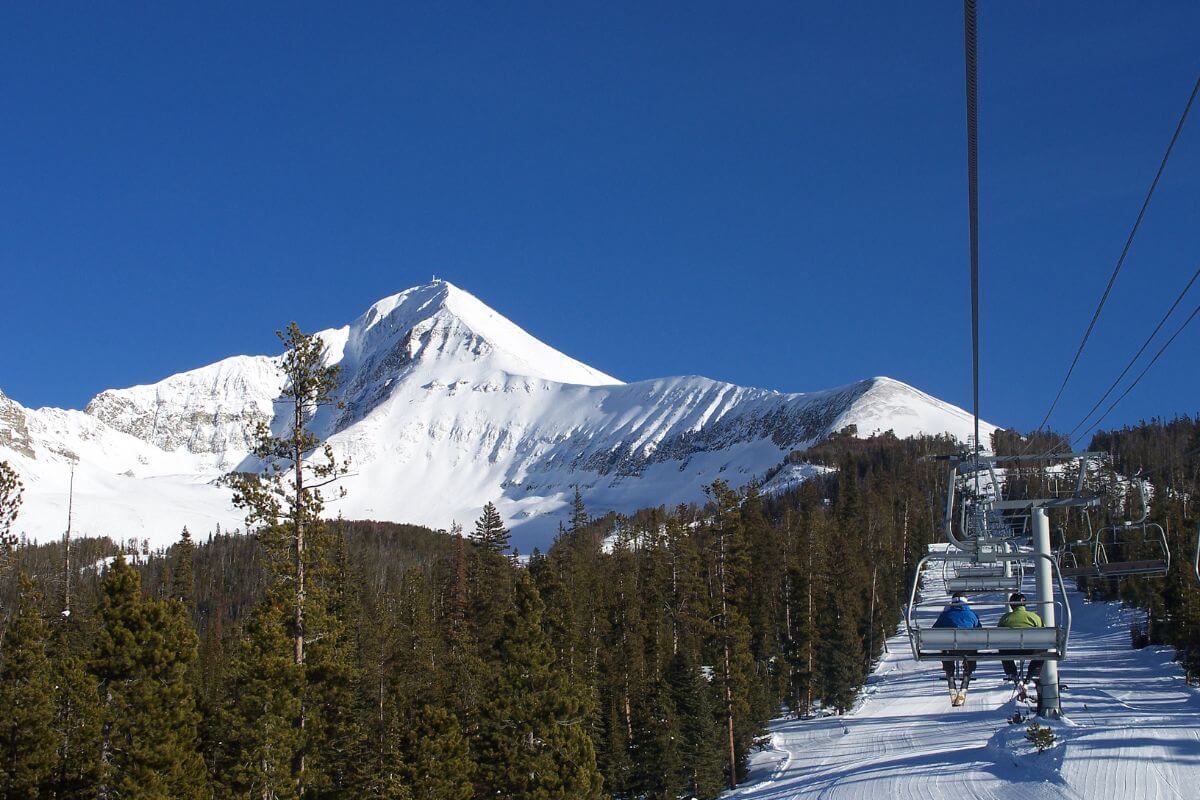
Montana and Wyoming offer a wide range of outdoor activities due to their stunning natural landscapes and abundant recreational opportunities.
When it comes to skiing, whether you choose to explore the Jackson Hole Ski Resort in Wyoming or Whitefish Mountain Resort in Montana, both states offer incredible skiing experiences.
Embrace the winter wonderland, and settle the “best skiing” debate for yourself in these excellent skiing destinations when making a trip.
Here’s a list of some Ski Resorts in Montana:
- Big Sky Resort – Big Sky Resort offers not only excellent skiing but also a plethora of events, top-notch restaurants, and après-ski entertainment to keep you entertained all day.
- Whitefish Mountain Resort – Whitefish Mountain Resort caters to both beginners and experts. It’s known for its breathtaking views of Flathead Lake and the Bitterroot Valley.
- Bridger Bowl Ski Area – Bridger Bowl Ski Area is famous for its challenging slopes and backcountry skiing treasures. Located near Bozeman, it’s a must-visit for those seeking an adrenaline rush.
- Montana Snowbowl Ski Resort – Montana Snowbowl is an alpine skiing destination within the Lolo National Forest in western Montana, approximately 12 miles to the northwest of Missoula.
- Discovery Ski Area – Discovery Ski Area sprawls across Rumsey and Jubilee mountains, featuring 4 unique faces catering to skiers of all levels.
Here’s a list of some ski resorts in Wyoming:
- Jackson Hole Mountain Resort – Jackson Hole Mountain Resort, located at Teton Village, offers top-tier skiing and snowboarding experiences suitable for enthusiasts of all skill levels.
- Hogadon Basin Ski Area – Situated in Casper, Wyoming, Hogadon Basin is a great choice for families and beginners. It offers a friendly environment for all ages.
- White Pine Resort – Located near Pinedale, Wyoming, White Pine Resort is a backcountry skiing paradise. It’s perfect for those seeking untouched powder and pristine wilderness.
- Snowy Range Ski Area – Nestled in the Medicine Bow National Forests, Snowy Range Ski Area boasts scenic vistas and a variety of slopes suitable for all skill levels.
- Snow King Mountain – Snow King Mountain is a year-round destination situated in Jackson, Wyoming. The mountain is Jackson’s original 1936 ski hill and was the first ski area in Wyoming.
Montana vs Wyoming Final Thoughts

It’s clear that both states offer a wealth of opportunities for those seeking a taste of country life and a connection with the great outdoors, steeped in cultural significance and rugged history.
When it comes to location, Montana’s expanse and beautiful country landscapes beckon adventurers to embark on countless adventures, from exploring alpine lakes to conquering mountain peaks.
Meanwhile, Wyoming’s Bighorn Mountains and diverse physiographic areas provide a diverse range of recreational opportunities, ensuring there’s something for everyone.
Personal preferences play a role in choosing between these two noble cowboys of the American West. Whether you prefer the charm of Montana’s tamed land or Wyoming’s breathtaking terrain.
In the cost of living debate, Montana boasts slightly higher education levels and a slightly stronger healthcare system, while Wyoming showcases a slightly better economy and income levels.
When it comes to weather and terrain, both states excel in their own right. Montana’s diverse landscapes and dry, sunny summers contrast with Wyoming’s cooler summers due to elevation.
And finally, settling the skiing debate, both states offer excellent ski resorts that cater to skiers of all skill levels.
Whether you’re at Whitefish Mountain Resort, Jackson Hole, or Snowy Range, you’ll find a winter wonderland waiting to be explored.
In the end, choosing between Montana and Wyoming comes down to your personal preferences, priorities, and the type of experiences you seek.
Whichever path you choose, both states will leave you with an endearing sense of the American West and memories that last a lifetime.
So, whether you find yourself roaming Montana’s big sky or Wyoming’s rugged terrain, know that you’re in for an unforgettable journey.
Montana vs Wyoming FAQs
1. Is Yellowstone National Park Located in Montana or Wyoming?
Yellowstone National Park covers 3,471 square miles and is predominantly situated in the state of Wyoming, encompassing approximately 96% of its total area.
Additionally, about 3% of the park crosses into the state of Montana, and 1% extends into Idaho.
2. Which State Boasts a Larger Population, Montana or Wyoming?
As of July 1, 2022, Montana has a larger population compared to Wyoming. With an estimated count of 1,122,867, Montana surpasses Wyoming’s population of 581,381.
These population figures highlight the larger populace residing in Montana, making it the more populous of the two states.
3. Between Montana and Wyoming, Which State Boasts More National Parks
Between Montana and Wyoming, Montana boasts 2 national parks: Glacier National Park and Yellowstone National Park.
Wyoming also has 2 national parks: Yellowstone National Park and Grand Teton National Park. Therefore, both states have an equal number of national parks, with each having 2.
If you want to learn more about Montana, keep your mind engaged with these articles:
- Choosing Between Montana and Oregon
- South Dakota vs Montana Overview
- Montana’s Cinematic Legacy
- Montana Top Questions
- http://www.wrds.uwyo.edu/sco/climateatlas/temperature.html
- https://wgfd.wyo.gov/wildlife-in-wyoming
- https://www.usgs.gov/centers/national-minerals-information-center/mineral-industry-wyoming
- https://www.census.gov/quickfacts/fact/table/MT/PST045222
- https://www.census.gov/quickfacts/fact/table/WY/PST045222
- https://commons.wikimedia.org/wiki/File:On_the_Lift_at_Big_Sky_Resort

